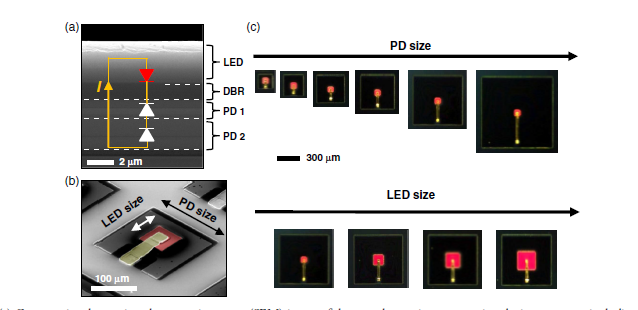Ultrafast and low-power optoelectronic infrared-to-visible upconversion devices
Abstract—Photon upconversion with transformation of low-energy photons to high-energy photons has been widely studied and especially applied in biomedicine for sensing, stimulation, and imaging. Conventional upconversion materials rely on nonlinear luminescence processes, suffering from long decay lifetime or high excitation power. Here, we present a microscale, optoelectronic infrared-to-visible upconversion device design that can be excited at low power (1–100 mW∕cm2). By manipulating device geometry, illumination position, and temperature, the device luminescence decay lifetime can be tuned from tens to hundreds of nanoseconds. Based on carrier transportation and circuit dynamics, theoretical models are established to understand the transient behaviors. Compared with other mechanisms, the optoelectronic upconversion approach demonstrates the shortest luminescence lifetime with the lowest required excitation power, owing to its unique photon–electron conversion process. These features are expected to empower the device with essential capabilities for versatile applications as high-performance light emitters.

